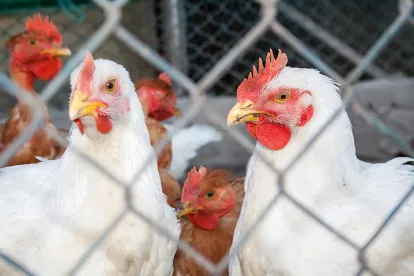Companies should be aware that FDA has resumed routine surveillance inspections of registered food facilities on February 7, after temporarily putting them on pause in late December 2021 due to the spread of the omicron variant of COVID-19. The FD&C Act requires FDA to inspect domestic food facilities either once every three years or every five years (depending on whether a facility is “high-risk” or not), but FDA’s inspection activities over the past two years have been severely hampered by the ongoing COVID-19 pandemic. In March 2020, at the onset of the pandemic, FDA limited its inspections to “mission-critical” issues – for example, those related to foodborne illness outbreaks – which generally did not include routine surveillance visits. Throughout 2021, FDA completed only a fraction of the human and animal food domestic surveillance inspections it had planned. With FDA’s February 2022 announcement, food facilities should anticipate a visit from the agency in 2022 – especially if it has been several years since the last visit, or if a facility’s last FDA inspection identified critical items for resolution or follow-up.
FDA releases updated list of forthcoming documents
In June 2021, the FDA’s Center for Food Safety and Applied Nutrition (CFSAN) and Office of Food Policy and Response (OFPR) released a priority list of draft and final guidance topics that the FDA Foods Program intends to complete by June 2022. In January 2022, the FDA released an updated list, which is available here. Stakeholders may submit comments on the guidance topics via www.regulations.gov at Docket FDA-2021-N-0553. Forthcoming guidance documents of note include:
-
Premarket Consultation on Cultured Animal Cell Foods: Draft Guidance for Industry
-
Foods Derived from Plants Produced Using Genome Editing: Draft Guidance for Industry
-
Labeling of Plant-Based Milk Alternatives: Draft Guidance for Industry
-
Labeling of Plant-Based Alternatives to Animal-Derived Foods: Draft Guidance for Industry
-
Action Levels for Lead in Food Intended for Babies and Young Children: Draft Guidance for Industry
-
In April, FDA published a new draft guidance on allergens entitled “Evaluating the Public Health Importance of Food Allergens Other Than the Major Food Allergens Listed in the Federal Food, Drug, and Cosmetic Act,” available here.
FDA releases action plan for reducing toxic metals exposure in baby food
In October 2021, the FDA released its Closer to Zero action plan, which identifies actions that the agency will take to reduce exposure to toxic heavy metals (such as arsenic, lead, cadmium, and mercury) that can be present in food intended for babies and young children. The plan comes on the heels of a 2021 U.S. House of Representatives committee report which concludes that commercial baby foods are tainted with “significant levels” of toxic heavy metals.
Elements of the action plan include further research on dietary exposure to toxic elements, encouraging industry best practices; setting action levels with input from stakeholders, and increased targeted and compliance activities. As noted above, FDA proposes to issue draft guidance on action levels for lead in baby food in 2022.





 />i
/>i

